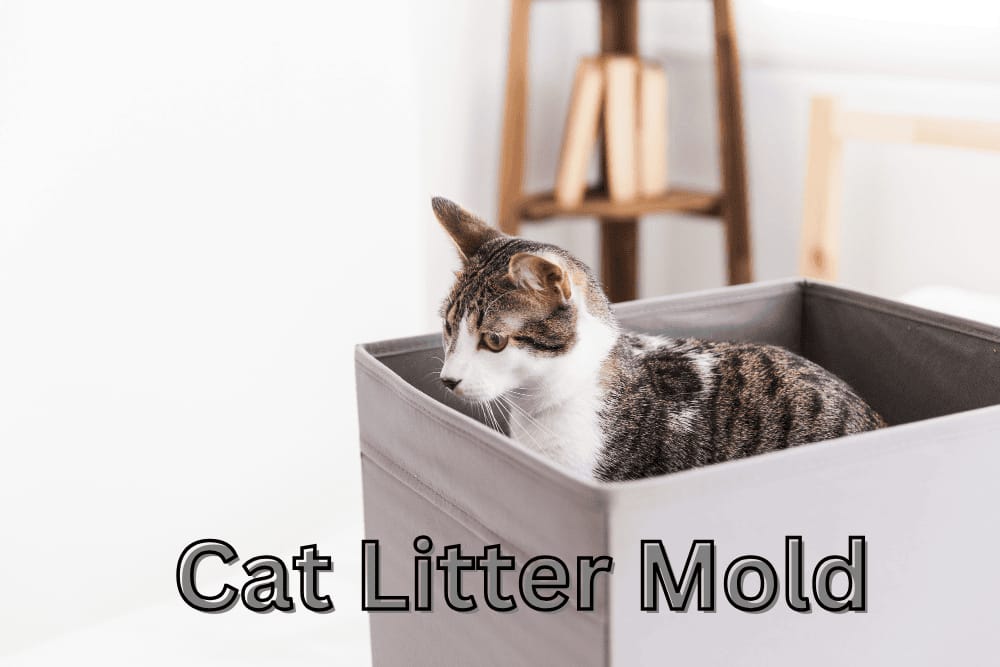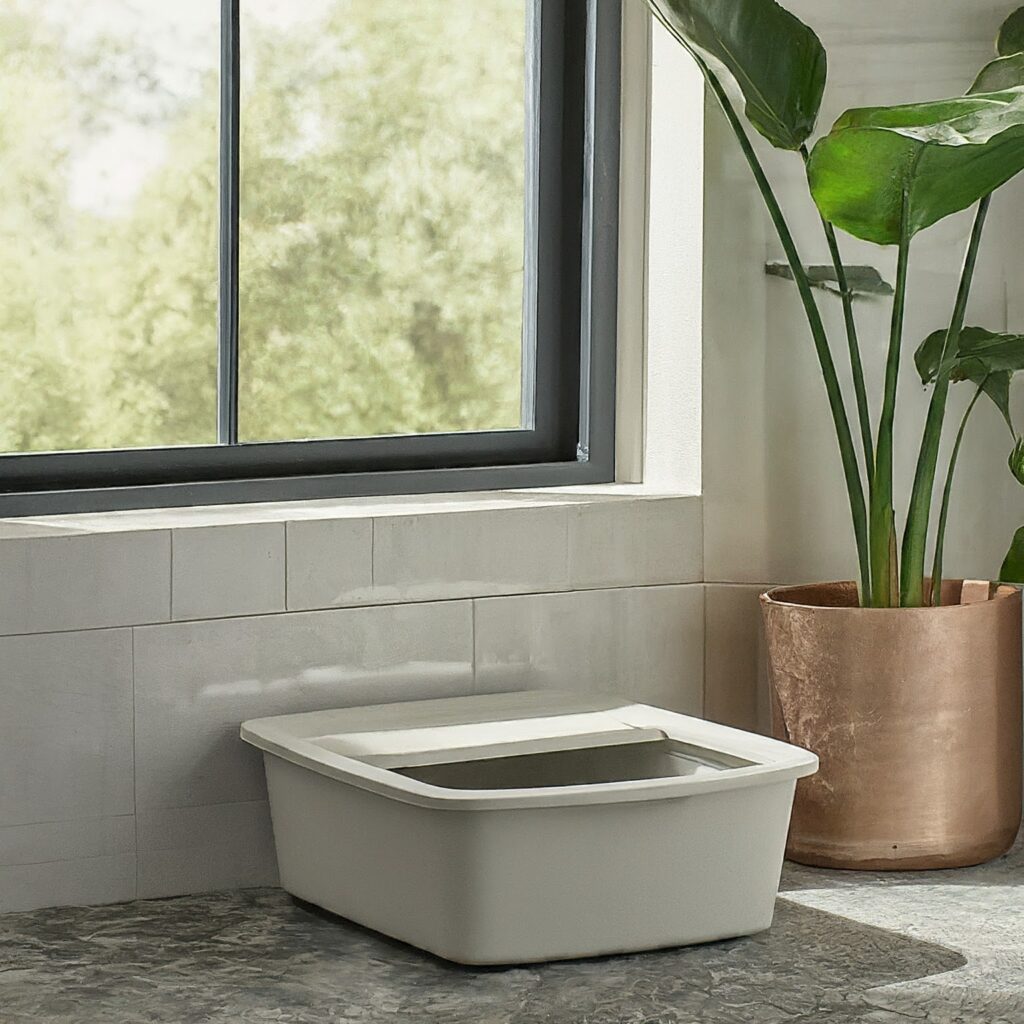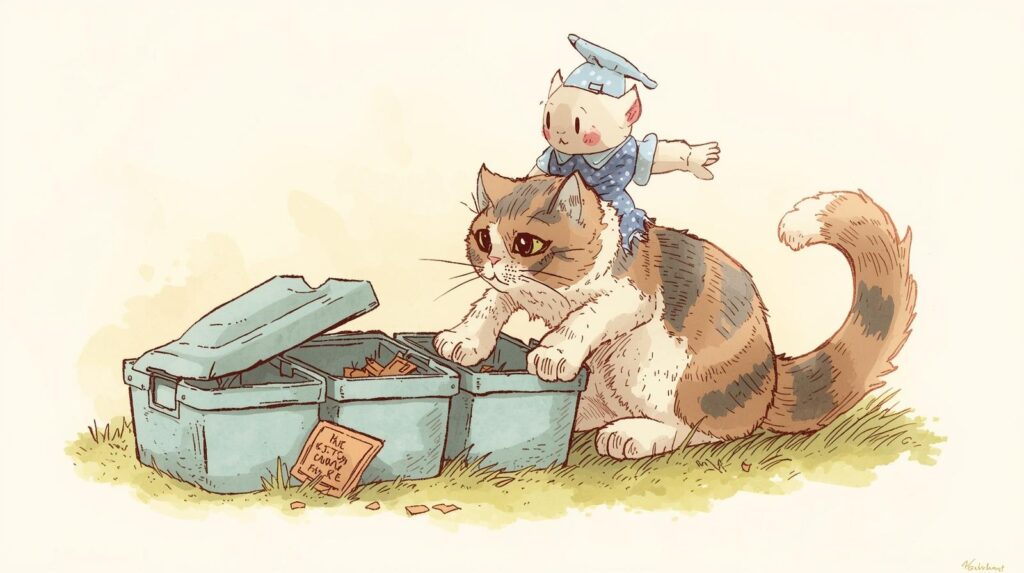Cat Litter Mold Caring for your feline friend brings immense joy and a deep sense of responsibility. However, many cat owners unknowingly expose their household to potential health risks due to a neglected litter box. Mold growth in the cat litter box can lead to fuzzy patches or even festering clumps of waste. Left unattended, it becomes a nuisance, releasing allergenic spores and toxic mycotoxins. Some common culprits include Aspergillus, Penicillium, and StachyBotrys—also known as black mold—which create an unhealthy environment for both your feline and your family.

To keep the litter environment odor-free and safe, cat owners must take preventative measures. Regular cleaning eliminates the risk of mold infestation, while diligent hygiene ensures a healthier space for everyone. Use quality litter that clumps effectively to make removing waste easier and reduce future mold issues. By maintaining an odor-free oasis and taking these effective steps, you safeguard the health and happiness of your feline friends while ensuring a cleaner and safer household.
Cat Litter Mold- The Answer
To keep your cat safe from litter mold, clean the litter box weekly using warm water and mild detergent, focusing on hard-to-reach areas. Use high-quality, clumping litter and place the box in a ventilated area. Regularly sanitize scoops and liners, wear gloves for extra protection, and inspect unusual findings like mold or hairy feces for possible underlying causes such as hairballs or parasites
Table of Contents
Prevent Mold by Cleaning Your Cat’s Litter Box
- Understand the Risk:
- Mold, such as Aspergillus and Stachybotrys (black mold), can create a hazardous environment for pets and people.
- Mold releases spores and mycotoxins that may trigger allergies, infections, and neurological issues.
- Mold thrives in damp, organic-rich environments, making a neglected litter box an ideal breeding ground.
- Spot Early Signs:
- Look for colored, fuzzy patches in the litter box—this is a sign to act fast.
- Discard contaminated litter immediately to prevent the spread of mold.
- Disinfect the box thoroughly to remove the root of the infestation.
- Maintain Hygiene Habits:
- Scooping soiled litter daily and replacing it as needed is crucial to prevent mold growth.
- Use unscented clumping litter for easier cleaning and mold prevention.
- Keep the Area Dry:
- Mold thrives in moisture but starves in a dry environment.
- Regularly sanitize and keep the litter box area clean to avoid mold infestations.
By following these steps, you can ensure a safe, clean, and toxic-free environment for your pets.
Mold Types and Prevent Mold Instructions
StachyBotrys
Its slimy, green, or black growth thrives on moisture and organic matter, releasing spores that may be inhaled or ingested, causing serious health issues for pets and humans. These spores produce mycotoxins that can affect respiratory health and lead to toxic reactions. If you notice signs of an infestation, take immediate action to prevent further harm.
Preventing StachyBotrys Mold
Use unscented, clumping litter to reduce moisture and simplify scooping.
- Clean the litter box regularly with a diluted bleach or biocidal solution to kill spores.
- Dispose of soiled litter in sealed plastic bags to prevent dispersing mold.
- Replace damp organic matter immediately to avoid creating a breeding ground.
- Follow rigorous hygiene practices to deprive mold of growth conditions, ensuring safety for your pets and household.
Trichoderma
Trichoderma, a fungal genus, thrives in moist, cellulose-rich environments, often forming white, green, or yellow patches in cat litter. For cat owners, its proliferation can create significant issues if left unchecked. To prevent this, adopt proper hygiene by using unscented clumping litter, daily scooping routines, and ensuring regular full changes to remove moisture sources and organic matter promptly.
Steps to Address Trichoderma Growth:
- Replace litter frequently to avoid soiled, inviting environments.
- After emptying the litter box, clean with diluted bleach solution or antimicrobial cleaner.
- Dispose of used litter in sealing plastic bags to contain spores.
- Ensure prompt removal of soiled litter and maintain a diligent routine to prevent infestations.
- Keep the litter box dry to discourage fungal growth.
Acremonium
Acremonium, a genus of fungi, is a harmful mold that grows in moist environments with organic matter, like neglected cat litter. It forms fuzzy patches in pink, grey, or orange and produces mycotoxins that can cause severe health issues if inhaled or ingested by pets or humans.
To tackle this problem:
- Discard the existing litter in sealed plastic bags to contain the spread.
- Clean and disinfect the litter box with a diluted bleach solution or fungicidal product.
- Use unscented clumping litter to reduce moisture sources.
- Adopt a diligent daily scooping routine with frequent scoopings and complete changes.
- Maintain excellent hygiene to deprive mold of its damp, soiled conditions and prevent toxic compound buildup.
Taking these steps is advisable to ensure the safety of pets and humans.
Fusarium
Fusarium, a genus of fungi, can grow in cat litter, especially when organic matter and moisture are present. This pinkish or reddish mold produces mycotoxins that are harmful if ingested, posing a serious health concern for pets.
To address and prevent this issue:
- Discard existing litter immediately, sealing it in plastic bags for safe disposal.
- Thoroughly disinfect the litter box with a diluted bleach solution or a product specifically designed to kill toxic molds.
- Remove soiled clumping litter daily to avoid extended periods of contamination.
- Reduce moisture sources and maintain excellent hygiene.
- Stay vigilant for unusual pink or red mold, and act promptly to eliminate it.
Penicillium
Penicillium, a genus of molds, thrives in used cat litter when left uncleaned too long or in moist, organic-rich environments. Distinctive green or blue-green colored patches may appear, signaling its presence. Regular care and promptly disposing of soiled litter are essential for preventing mold infestations and maintaining a healthy fresh litter box.
Steps to Prevent Penicillium Infestations:
- Discard existing litter immediately in a sealed plastic bag to prevent airborne spores.
- Thoroughly clean and disinfect the litter box using a diluted bleach solution or fungicidal cleaner.
- Use unscented, clumping litter and scoop solids once per day.
- Avoid built-up moisture and maintain a clean, dry environment.
- Ensure proper disposing of soiled litter to make it difficult for molds to grow and spread.
These steps help reduce odor and keep your litter box mold-free.
Conclusion
Mold growth in a cat litter box can pose serious health risks to both cats and humans, as it releases harmful spores and mycotoxins. Regular cleaning, using high-quality clumping litter, and maintaining proper hygiene are key to preventing mold infestations. By taking proactive measures such as scooping daily, disinfecting the litter box, and ensuring proper ventilation, cat owners can create a safer, healthier environment for their pets and family. Vigilance against common molds like Stachybotrys, Aspergillus, and Penicillium can help keep the household free from mold-related health concerns.
FAQ’s
Can cat litter cause mold in the house?
Avoid using corn or plant-based cat litter, as exposure to moisture can lead to the growth of aflatoxin mold, which is harmful to pets. Stick to safer litter options to protect your cat’s health.
Why is there mold growing on my cat’s poop?
The fuzzy mold in cat litter is likely an environmental contaminant, appearing 24-48 hours after urine or stool sits in the box. This happens because carbohydrates in the waste create a favorable environment for mold growth, similar to dog stools left outdoors.
Does cat litter stop mold?
To reduce moisture in sheds or garages, use a dehumidifier if there’s power. Alternatively, natural options like silica gel packs, rock salt, or cat litter can effectively absorb excess humidity over time.


